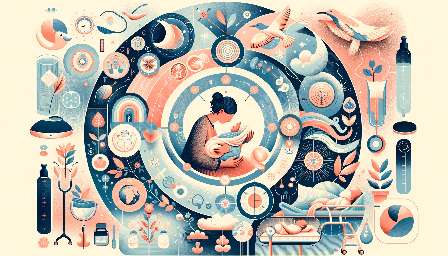Preparing for childbirth involves understanding the common complications that may arise during labor and delivery. By being informed and prepared, expectant parents can navigate these challenges and ensure a safe and healthy delivery. This article explores the various complications that may occur during labor and delivery, provides insights into preparing for childbirth, and helps individuals understand the childbirth process.
Common Complications During Labor and Delivery
Labor and delivery are natural processes, but they can sometimes be accompanied by complications that require medical attention. It's essential for expectant parents to be aware of these potential challenges and educate themselves on how to address them. Some of the common complications during labor and delivery include:
- Prolonged Labor: When labor lasts longer than usual, it can lead to exhaustion for the mother and distress for the baby. Medical intervention may be necessary to expedite the delivery process.
- Fetal Distress: The baby may show signs of distress during labor, which can be caused by various factors such as oxygen deprivation. Monitoring the baby's well-being is crucial, and interventions may be required to ensure a healthy delivery.
- Failure to Progress: In some cases, labor may not progress as anticipated, leading to prolonged labor and exhaustion. Medical professionals may need to assess the situation and provide interventions to facilitate progress.
- Umbilical Cord Complications: Issues such as umbilical cord compression or prolapse can pose serious risks to the baby's well-being. Immediate medical attention is crucial to address these complications.
- Postpartum Hemorrhage: Excessive bleeding after delivery can occur due to various factors, and prompt medical care is critical to address this potentially life-threatening complication.
Preparation for Childbirth
Preparing for childbirth involves more than decorating the nursery and packing a hospital bag. It requires expectant parents to be informed about the entire childbirth process, including potential complications and how to manage them. Some essential aspects of preparation for childbirth include:
- Childbirth Education: Attending childbirth classes can provide invaluable knowledge about the stages of labor, pain management techniques, and what to expect during delivery.
- Birth Plan: Creating a birth plan allows expectant parents to communicate their preferences and priorities with their healthcare providers, ensuring that their wishes are considered during delivery.
- Support System: Building a strong support system, including a partner, family members, and healthcare professionals, is crucial for emotional and practical support during childbirth.
- Understanding Medical Interventions: Familiarizing oneself with common medical interventions during childbirth, such as epidurals or cesarean deliveries, can alleviate anxiety and ensure informed decision-making during delivery.
The Childbirth Process
Childbirth is a transformative experience, and understanding the process can help alleviate fears and uncertainties. The stages of the childbirth process include:
- Early Labor: Contractions become regular and the cervix begins to dilate.
- Active Labor: Contractions intensify, and the cervix continues to dilate, often leading to the urge to push.
- Delivery: The baby is born during this stage, marking the end of labor and the beginning of the postpartum period.
- Postpartum: The period following delivery that involves recovery, bonding with the baby, and adjustments to the new family dynamic.
By understanding these stages, expectant parents can prepare both physically and emotionally for childbirth.


